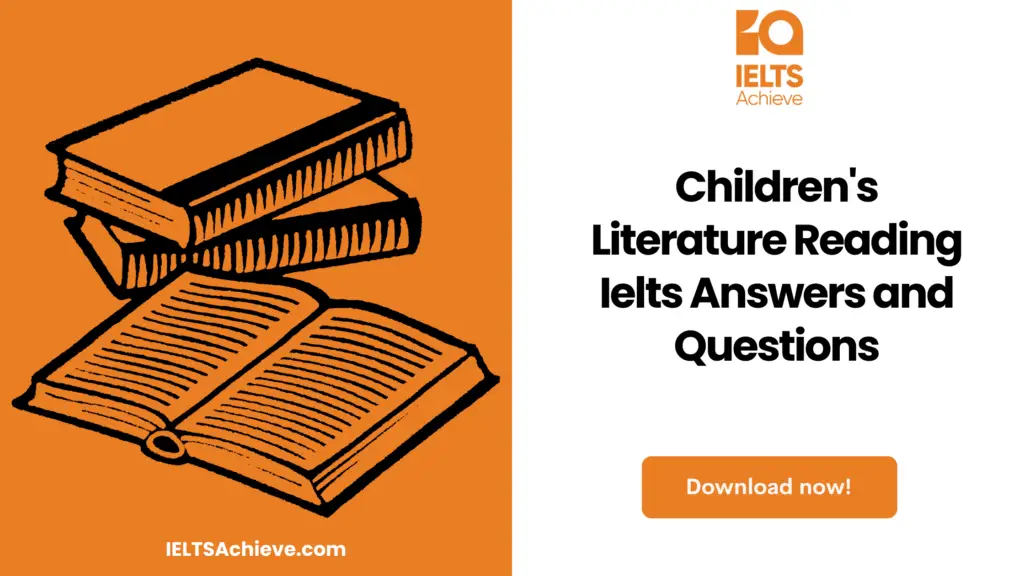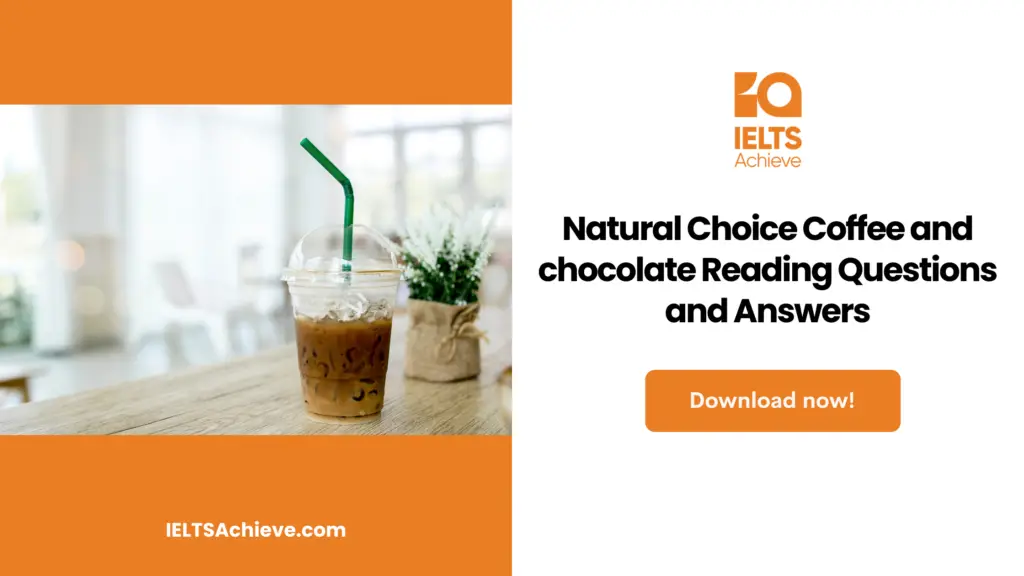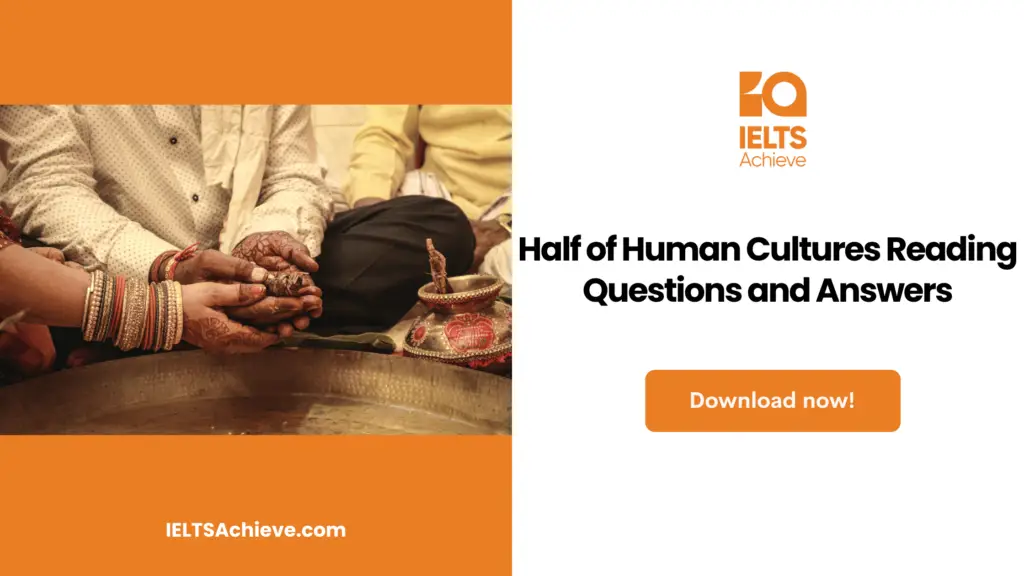The Blog post contains the following IELTS Reading Questions
- IELTS Reading Matching Features
- IELTS Reading Sentence Completion
- IELTS Reading Short Answer Question
Stay informed and prepared for success – Explore our comprehensive Reading Test Info page to get valuable insights, exam format details, and expert tips for mastering the IELTS Reading section.
IELTS reading passage – Children’s Literature

Children’s Literature
There is a long history of Children’s stories and poems. Lullabies, for example, were sung in Roman times, and a few games and nursery rhymes are almost as old. However, in 1700 there were stories in print that children often seized the opportunity when they had it , such as translations of Aesop’s fables, fairy-stories, and popular ballads and romances. They were not specifically aimed at young people. The only truly child-oriented literature at the time would have been a few instructional works to help with reading and general knowledge, as well as the occasional Puritanical tract as a morality aid, so eager child readers had no choice but to read adult literature.
By the mid 18th century, there were enough eager kid readers, and enough parents willing to pander to this enthusiasm, for publishers to specialise in children’s books whose primary goal was entertainment rather than teaching or morals. Cajanus, The Swedish Giant was published in 1742 by a London merchant named Thomas Boreham, while A Little Pretty Pocket Book was published in 1744 by the more famous John Newbery. Its contents—rhymes, stories, children’s games, and a free present (‘A ball and a pincushion’)—foreshadowed the lucky-dip contents of children’s annuals this century in many ways. It’s a testament to Newbery’s talent that he came up with a winning formula so rapidly, and that it was almost immediately stolen in America.
Such pleasing levity was not to last. Influenced by Rousseau, whose Emile, Or Treatise on Education (1762) decreed that all books for children save Robinson Crusoe were a dangerous diversion, contemporary critics saw to it that children’s literature should be instructive and uplifting. Mrs. Sarah Trimmer’s magazine The Guardian of Education (1802) published the first regular reviews of children’s books, and was one of the most prominent of these voices. Her own stories, Fabulous Histories (1786), described talking animals who were always models of sense and decorum, and she was the one who condemned fairy tales for their violence and general absurdity.
So, the moral story for children was always under threat from within, given how children can elicit entertainment from even the most stern moralist. The greatest blow to the improving children’s book came from an unlikely source: early 19th century folklore interest. James Orchard Halliwell chose the Nursery rhymes for a folklore society in 1842. And, also the Grimm brothers’ collection of fairy tales were quickly translated into English in 1823 and became popular with children, prompting new editions, each one more child-centric than the last. Younger children can now expect stories tailored to their specific interests, with the needs of their own limited life experience firmly in mind.
What eventually determined the reading of older children was access to books that contained characters and not the availability of special children’s literature, such as young people or animals, with whom they could more easily empathise, or actions like fighting and exploring, that made few demands on understanding and adult maturity.
With the arrival in the late 1930s of child-centred best-sellers the final apotheosis of literary childhood as something to be protected from unpleasant reality came intended as entertainment at its most escapist. British novelists such as Enid Blyton and Richmal Crompton said children who were always free to have the most unlikely adventures, believe that nothing bad could ever happen to them in the end. In the self-enclosed world inhabited by Enid Blyton’s young characters, the fact that war broke out again during her books’ greatest popularity fails to register. After World War II, reaction against such dream-worlds was inevitable, coinciding with the growth of paperback sales, new spirit of social and moral concern and children’s libraries. Writers slowly began to explore new areas of interest urged on by committed publishers and progressive librarians while also changing the settings of their plots from the middle-class world to which their chief patrons had always previously belonged.
Critical emphasis, during this development, has been divided. For some the most important task to get rid children’s books of the social prejudice and exclusiveness, no longer found acceptable. The other people concentrated more on the good accomplishments of modern children’s literature. The fact that authors of these works are now frequently recommended to adult as well as child readers echoes the 19th-century belief that children’s literature can be passed down through generations rather than serving as a protective barrier between childhood and the necessary maturation toward adult understanding.
Unlock your full potential in the IELTS Reading section – Visit our IELTS Reading Practice Question Answer page now!
Recommended Questions:
Renewable Energy IELTS Reading Question with Answer
Children’s Literature IELTS reading questions
Questions 1-5
Look at the following statements and the list below.
Match each statement with the correct one.
NB – You may use any answer more than once.
1. Translations of Aesop’s fables, fairy-stories, and popular ballads and romances
2. Cajanus, The Swedish Giant was published
3. A Little Pretty Pocket Book was published
4. Emile, Or Treatise on Education was published
5. The Guardian of Education was published
A. 1762
B. 1700
C. 1802
D. 1742
E. 1744
F. 1786
Improve your performance in Matching Features questions by clicking here to access our comprehensive guide. Learn how to match specific features or characteristics with the options provided in the IELTS Reading section.
Questions 6-10
Complete the sentences below
Write the answer with NOT MORE THAN THREE WORDS from the passage.
6. Lullabies were sung in _____ times, and a few games and nursery rhymes are almost as old.
7. British novelists such as ________ and Richmal Crompton said children who were always free to have the most unlikely adventures, believe that nothing bad could ever happen to them in the end.
8. It’s a testament to ________ talent that he came up with a winning formula so rapidly, and that it was almost immediately stolen in America.
9. _______ (1786), described talking animals who were always models of sense and decorum, and she was the one who condemned fairy tales for their violence and general absurdity.
10. After ________ II, reaction against such dream-worlds was inevitable, coinciding with the growth of paperback sales, new spirit of social and moral concern and children’s libraries.
Enhance your sentence completion skills in the IELTS Reading section. Click here to access our comprehensive guide and learn effective strategies for filling in missing words or phrases in sentences.
Questions 11-15
Answer the questions below.
Choose NO MORE THAN THREE WORDS AND/OR A NUMBER from the passage for each answer.
11. Who wrote Cajanus, The Swedish Giant?
12. Who published the book, A Little Pretty Pocket Book?
13. Who is the author of Emile, Or Treatise on Education?
14.Who chose nursery rhymes for the folklore society in 1842?
15. When was Fabulous Histories published?
Unlock your full potential in the IELTS Reading section – Visit our IELTS Reading Practice Question Answer page now!
Recommended Questions:
Renewable Energy IELTS Reading Question with Answer
Children’s Literature IELTS Reading Answers
1. B. 1700
2. D. 1742
3. E. 1744
4. A. 1762
5. C. 1802
6. Roman
7. Enid Blyton
8. Newbery’s
9. Fabulous Histories
10. World War
11. Thomas Boreham
12. John Newbery
13. Rousseau
14. James Orchard Halliwell
15. 1786

We hope you found this post useful in helping you to study for the IELTS Test. If you have any questions please let us know in the comments below or on the Facebook page.
The best way to keep up to date with posts like this is to like us on Facebook, then follow us on Instagram and Pinterest. If you need help preparing for the IELTS Test, join the IELTS Achieve Academy and see how we can assist you to achieve your desired band score. We offer an essay correction service, mock exams and online courses.

